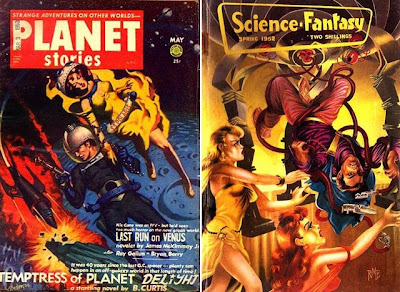(cross-posted to
Frequently Felt)A great writer ... and a wonderful character! Wiki
Wiki:
Georges Joseph Christian Simenon (pronounced [ʒɔʀʒ simˈnɔ̃] in French) (February 13, 1903–September 4, 1989) was a Belgian writer who wrote in French. He is best known for the creation of the fictional detective Maigret.
At the age of three, Simenon learned to read at the Sainte-Julienne nursery school. Then, between 1908 and 1914, he attended the Institut Saint-André. In September 1914, shortly after the beginning of the First World War, he began his studies at the Collège Saint-Louis, a Jesuit high school.
In the summer of 1915, going against the grain of the Jesuits' chaste teachings, the twelve year-old Simenon had the first of many sexual experiences in his long life; in this case, with an older girl of fifteen. Many years later, Simenon was known as "the man of 10,000 women," a self-confessed sex addict who "needed" to have sex three times a day. Quite a few women were prepared to humor him for nothing, nevertheless, these 10,000 were said to include 8,000 prostitutes. It has been suggested that the real number of women in Simenon's life was, although prodigious, vastly smaller than 10,000. In this he was quite different from his fictional creation, Maigret, who can be presumed to have been entirely faithful to Madame Maigret ....
Simenon's first novel, Au Pont des Arches was written in June 1919 and published in 1921 under his "G. Sim" pseudonym. Writing as "Monsieur Le Coq," he also published more than 800 humorous pieces between November 1919 and December 1922.
During this period, Simenon's familiarity with nightlife only increased: prostitutes, drunkenness, and general carousing. The people he rubbed elbows with included anarchists, bohemian artists, and even two future murderers, the latter appearing in his novel Les Trois crimes de mes amis. He also frequented a group of artists known as "La Caque." While not really involved in the group, he did meet his future wife Régine Renchon through it ....
Simenon's father died in 1922 and this served as the occasion for him to move to Paris with Régine Renchon (hereafter referred to by her nickname "Tigy"), at first living in the XVIIe Arrondissement, not far from the Boulevard des Batignolles. He became familiar with the city, its bistrots, cheap hotels, bars, and restaurants. More importantly, he also came to know ordinary working-class Parisians. Writing under numerous pseudonyms, his creativity began to pay financial dividends.
Simenon and Tigy returned briefly to Liège in March 1923 to marry. Despite his Catholic upbringing, Simenon was not a believer. Tigy came from a thoroughly non-religious family. However, Simenon's mother insisted on a church wedding, forcing Tigy to become a nominal convert, learning the Catholic Church's catechism. Despite their father's lack of religious convictions, all of Simenon's children would be baptized as Catholics. Marriage to Tigy, however, did not prevent Simenon from having liaisons with numerous other women, perhaps most famously, Josephine Baker ....
A reporting assignment had Simenon on a lengthy sea voyage in 1928, giving him a taste for boating. In 1929, he decided to have a boat built, the Ostrogoth. Simenon, Tigy, their cook and housekeeper Henriette Liberge, and their dog Olaf lived on board the Ostrogoth, traveling the French canal system. Henriette Liberge, known as "Boule" (literally, "Ball," a reference to her slight pudginess) was romantically involved with Simenon for the next several decades and would remain a close friend of the family, really part of it.

 - to all the wonderful people who braved a beautiful San Francisco Sunday to take my Sex Sells: How to Write & Sell Erotica class on Sunday. It was a lot of fun to teach - and hopefully a lot of fun to attend.
- to all the wonderful people who braved a beautiful San Francisco Sunday to take my Sex Sells: How to Write & Sell Erotica class on Sunday. It was a lot of fun to teach - and hopefully a lot of fun to attend.















